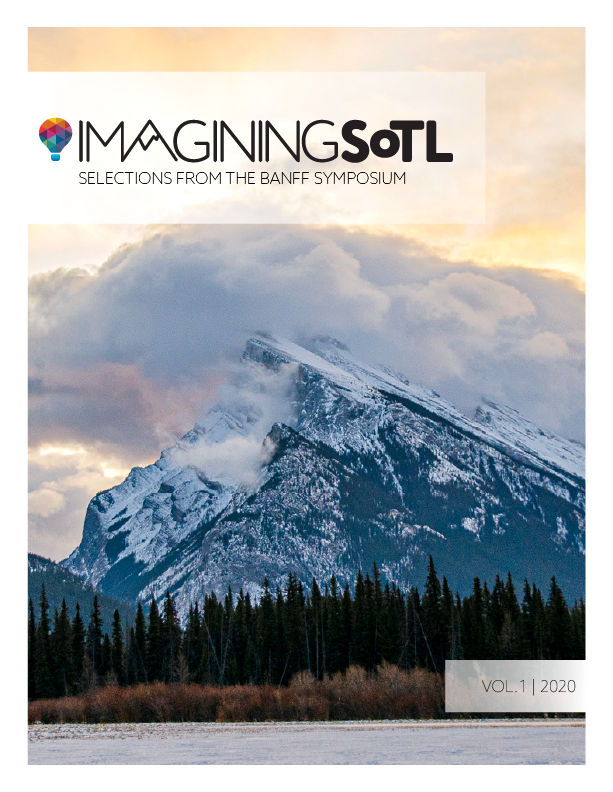Negotiating the Nation Through Superheroes
Making the Canadian Shield Visible
DOI:
https://doi.org/10.29173/isotl530Keywords:
identity, comics, cultural studies, multiculturalism, popular cultureAbstract
This case study focuses on Canadian students’ responses to our invitation to imagine their own nationalist superheroes whose costumes and powers represent a nation. We provide a close reading of 34 student artifacts to show how they draw on discourses that position Canada as a benevolent, multicultural country—a rhetorical formation we call the Canadian Shield. We also reveal how some artifacts negotiate tropes of the Shield, adapting or revising them in distinctive ways. We conclude, however, that when invited to create Canadian superheroes, many of the student creations reaffirm dominant visions of the country, and such habits of thought, we venture, are best considered as ideological bottlenecks.
Downloads
References
Arnold, S. (2010). ‘The men of the north’ redux: Nanook, the folk, and Canadian national identity. American Review of Canadian Studies, 40(4), 452–463.
Bell, J. (2006). Invaders from the north: How Canada conquered the comic book universe. Dundurn.
Bodroghkozy, A. (2002). “As Canadian as possible …: Anglo-Canadian popular culture and the American other.” In H. Jenkins, T. McPherson, & J. Shattuc (Eds.), Hop on pop: The politics and pleasures of popular culture (pp. 573–87). Duke University Press.
Bryant, R. (2017). The homing place: Indigenous and settler literary legacies of the Atlantic. Wilfrid Laurier University Press.
Chng, H. H., & Looker, P. (2013). On the margins of SoTL discourse: An Asian perspective. Teaching & Learning Inquiry, 1(1), 131–145. https://doi.org/10.20343/teachlearninqu.1.1.131
Coogan, P. (2008). The definition of a superhero. In J. Heer & K. Worcester (Eds.), Comics Studies Reader, (pp. 90–106). University Press of Mississippi.
Díaz, A., Middendorf, J., Pace, D., & Shopkow. L. (2008). The History Learning Project: A department ‘decodes’ its students. Journal of American History, 94(4), 1211–1224. https://doi.org/10.2307/ 25095328
Dittmer, J. (2013). Captain America and the nationalist superhero: Metaphors, narratives, and geopolitics. Temple University Press.
Dittmer, J., & Larsen, S. (2010). Aboriginality and the Arctic North in Canadian nationalist superhero comics, 1940–2004. Historical Geography, 38, 52–69.
Easton, L. (2017). Teaching the body of the nation: Captain America and masculinity. In S. Eckard (Ed.), Comic connections: Analyzing hero and identity (pp.115–130). Rowman and Littlefield.
Easton, L. and Hewson, K. (2013). How, exactly, does the beaver bite back? The case of Canadian students viewing Paul Haggis’s Crash. In G. Roberts & D. Stirrup (Eds.), Parallel encounters: Culture at the Canada-US border (pp. 91–108). Wilfrid Laurier University Press.
Easton, L., & Hewson, K. (2018). From border pedagogy to treaty pedagogy: Canadian exceptionalism in a Canadian film studies classroom. Canadian Review of American Studies, 48(Suppl. 1). 63–83. https://doi.org/10.3138/cras.2017.011
Easton, L., Lexier, R., Lindstrom, G., & Yeo, M. (2019). Uncovering the complicit: The decoding interview as a decolonising practice. In L. Quinn (Ed.), Re-imagining curriculum: Spaces for disruption (pp.149–169). SUN Press
Edwardson, R. (2003). The many lives of Captain Canuck: Nationalism, culture, and the creation of a Canadian comic book superhero. Journal of Popular Culture, 37(2), 184-201. https://doi.org/10.1111/1540-5931.00063
Fielding, M. (1999). Radical collegiality: Affirming teaching as an inclusive professional practice. The Australian Educational Researcher, 26, 1–34. https://doi.org/10.1007/BF03219692
Ghee, K. (2013). “Will the ‘real’ black superheroes please stand up?!”: A critical analysis of the mythological and cultural significance of black superheroes. In S. Howard & R. Jackson (Eds.), Black comics: Politics of race and representation, (pp. 198–210). Bloomsbury.
Grove, J. (2019). Bending before the storm: Continentalism in the visual culture of Canadian magazines. Journal of Borderlands Studies, 34(5), 783–806. https://doi.org/10.1080/08865655.2016.1222876
Hassel, H., & Launius, C. (2017). Crossing the threshold in introductory women’s and gender studies courses: An assessment of student learning. Teaching & Learning Inquiry, 5(2), 30–46. https://doi.org/10.20343/teachlearninqu.5.2.4
Hutcheon, L. (1988). The Canadian postmodern: A study of contemporary Canadian literature. Oxford.
Johnston, I., & Richardson, G. (2012). Homi Bhabha and Canadian curriculum studies: Beyond the comforts of the dialectic. Journal of the Canadian Association for Curriculum Studies, 10(1), 115–137.
Kreber, C. (2013). The transformative potential of the scholarship of teaching. Teaching & Learning Inquiry. 1(1), 5–18. https://doi.org/10.2979/teachlearninqu.1.1.5
Kymlicka, W. (2015). The three lives of multiculturalism. In S. Guo & L. Wong (Eds.), Revisiting multiculturalism in Canada: Theories, policies and debates (pp. 17–36). Sense Publications.
Manarin, K. (2018). Close reading: Paying attention to student artifacts. In N. Chick (Ed.), SoTL in action: Illuminating critical moments of practice (pp.100–108). Stylus Publishing.
Manning, F. E. (1993). Reversible resistance: Canadian popular culture and the American other. In D. Flaherty and F. E. Manning (Eds.), The beaver bites back? American popular culture in Canada (pp. 8–28). McGill-Queen’s University Press.
Mackey, E. (1999). The house of difference: Cultural politics and national identity in Canada. Routledge.
Miller-Young, J., & Boman, J. (2017). Uncovering ways of thinking, practicing, and being through decoding across the disciplines. New Directions for Teaching and Learning, 2017(150), 19–35. https://doi.org/ 10.1002/tl.20235
Ozguc, U. (2011). Remaking Canadian identity: A critical analysis of Canada's human security discourse. Journal of Human Security, 7(3), 37–59. https://doi.org/10.3316/JHS0703037
Rabinovitch, V. (2011). The North in Canadian identity. Queen’s Quarterly, 118(1), 16–31.
Redden, C. J. (2002). Health care as citizenship development: Examining social rights and entitlement. Canadian Journal of Political Science, 35(1), 103–125. https://doi.org/10.1017/S0008423902778190
Roblou, Y. (2012). Complex masculinities: The superhero in modern American movies. Culture, Society and Masculinities, 4(1), 76–91. https://doi.org/10.3149/CSM.0401.76
Statistics Canada. (2018). 2018 annual report to parliament on immigration. https://www.canada.ca/en/immigration-refugees-citizenship/corporate/publications-manuals/annual-report-parliament-immigration-2018/report.html
Wright, H. K. (2016). Once more, whence and whither Canadian multiculturalism? A review essay of Revisiting multiculturalism in Canada. Canadian Ethnic Studies, 48(2), 167–177. https://doi.org/ 10.1353/ces.2016.0019
Wright, H. K. (2012). Between global demise and national complacent hegemony: Multiculturalism and multicultural education in a moment of danger. In H. K. Wright, M. Singh, & R. Race (Eds.), Precarious international multicultural education: Hegemony, dissent and rising alternatives (pp. 103–113). Sense Publishers.
Published
Issue
Section
License
Copyright (c) 2021 Dr. Lee Easton, Dr. Kelly Hewson

This work is licensed under a Creative Commons Attribution-NonCommercial-NoDerivatives 4.0 International License.




